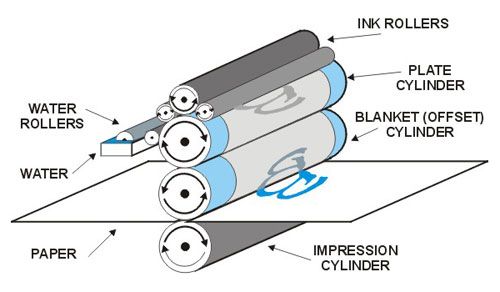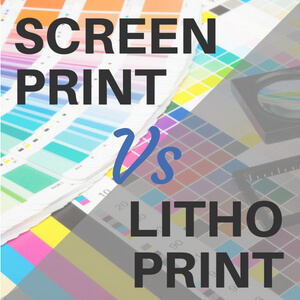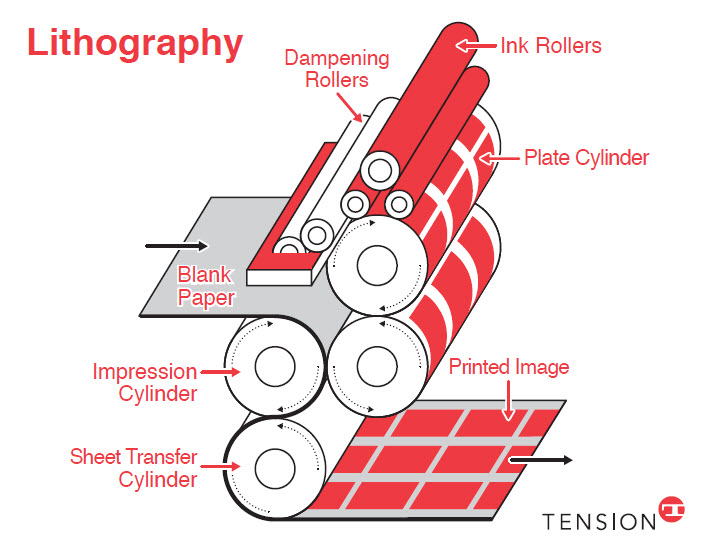What Helps litho printing Shine in the Market
A Comprehensive Overview to Recognizing Litho Printing Strategies
The world of litho printing, a technique stemming from the late 18th century, is an interesting mix of background, science, art and development. This detailed overview will unwind the intricacies of this printing method, from the structure of litho inks to the obstacles faced in contemporary applications. As we venture into the ins and outs of lithography, the importance of automation and sustainability in guaranteeing its future importance ends up being significantly clear. Remain with us as we trip right into the fascinating world of litho printing.
The Historical Evolution of Litho Printing
The historic trajectory of litho printing, a crucial innovation in the realm of interaction, is an exciting story of human resourcefulness. The procedure progressed with the development of the rotating press, which significantly enhanced productivity. Each stage of litho printing's advancement showcases mankind's unrelenting quest of effectiveness and high quality in visual communication.
Deciphering the Scientific Research Behind Litho Printing Inks
Moving on in the expedition of litho printing methods, the focus now shifts to the science behind litho printing inks. The make-up of these inks, their drying out procedure, and color mixing techniques form the foundation of this intricate art type. Comprehending these elements is essential to understanding the craft and accomplishing the desired print results.
Structure of Litho Inks
In lithographic printing, the basic function of litho inks can not be overstated. The make-up of litho inks varies depending on its purpose, yet typically, they include two major elements - pigments and vehicles. Pigments, the color-providing aspects, are carefully ground bits put on hold in the vehicle, a liquid that brings the pigment onto the printing surface. The car is a complex blend of oils, solvents, and materials, which affect the ink's drying time, bond, and gloss. In addition, various ingredients exist to boost specific homes like flow, drying, and resistance to environmental results. Each element plays an important component in the last print's top quality, making the accurate formula of litho inks an intricate science.
Ink Drying Refine
From the make-up of litho inks, interest turns to the interesting procedure of ink drying. The drying process is critical, as it affects the final print's high quality and long life. 2 main techniques are used in litho printing: oxidative drying out and absorption. Oxidative drying out involves the ink responding with oxygen airborne to form a hard, dry movie. This technique gives a resilient finish, however can be slower compared to absorption. Absorption, on the various other hand, entails the ink leaking into the paper fibers, which is a faster process however can bring about less dynamic colors. The choice between these methods depends on aspects such as print speed requirements, the paper type used, and the preferred coating.
Shade Combining Strategies
While the drying out procedure plays an essential role in litho printing, the science of shade mixing techniques holds equivalent relevance. This is a complex process that includes the mindful blending of primary shades: cyan, magenta, and yellow, in varying percentages to accomplish a vast array of colors. The addition of black ink, referred to as 'essential', assists in regulating the intensity and depth of the colors. The scientific research behind litho printing inks additionally takes into account the transparency of the ink, which affects how colors overlay and mix. To achieve an effective color mix, print professionals need to additionally recognize the complexities of ink behavior, color theory, and the physical homes of the substratum on which the ink is applied.
The Art and Style Elements in Litho Printing
Litho printing takes a breath life right into art and design with its one-of-a-kind elements. The procedure entails developing an image on a click site lithographic limestone plate or metal plate with a smooth surface area. The photo is after that printed onto a tool, generally paper, by moving the ink from the plate. What collections litho publishing apart is its ability to duplicate complex designs with high integrity, making the result nearly the same to the original artwork. This is attained via making use of various line techniques such as hatching, stippling, and cross-hatching, which enable a series of tonal results. Moreover, litho printing fits a range of shades, enabling musicians to create dynamic and dynamic prints. This combination link of accuracy and flexibility makes litho printing a favored choice for several artists and designers.
Modern Applications of Litho Printing Techniques
Litho printing methods have found considerable use in the modern business industry. Its impact and value remain to expand with the introduction of brand-new advancements and innovations in the area. This section will certainly discover these modern applications and the transformative duty they play in the printing industry.
Business Litho Printing Uses
In today's electronic age, one may question the significance of traditional printing techniques. Litho printing stays a crucial part of the commercial market. High-volume printing tasks, such as the production of books, newspapers, and packaging, count on litho printing for its ability to deliver remarkable picture quality and cost effectiveness. The process, which includes moving an inked picture from a plate onto a rubber covering and after that to the printing surface area, uses unrivaled uniformity. This makes it perfect for tasks calling for a large print run. Litho printing likewise offers a wide shade range, above that of digital printing. This makes it the go-to choice for jobs that demand lively, high-quality color reproduction.
Innovations in Litho Printing
Pushing the boundaries of standard techniques, contemporary advancements have sustained this post a host of advancements in litho printing. One prominent advancement is electronic litho printing, which integrates the merits of digital modern technology with litho's top quality result. These developments highlight the long-lasting relevance of litho printing in the modern-day globe.
Exploring the Process of Litho Printing: Detailed

Challenges and Solutions in Contemporary Litho Printing

Regardless of the precision and tradition that litho printing proudly supports, it is not without its set of contemporary difficulties. One of the most widespread issues consist of the high first setup expense, trouble in printing variable data, and environmental worries as a result of chemical usage. Solutions are emerging as innovation progresses. Digital litho printing permits affordable short runs and very easy modification, addressing the problem of variable information. Environmentally-friendly inks and safer plate-making processes reduce ecological worries. In addition, innovations in automation have actually reduced labor costs, further equalizing the lithography procedure. Hence, while there are challenges, the litho printing market is proactively adapting to fulfill them head-on, ensuring its importance in the future.
Conclusion
Finally, litho printing, with its rich background and clinical complexities, holds a significant area in the print market. As the overview discloses, it's a synthesis of art and innovation, with modern-day developments guaranteeing its relevance. Nevertheless, the sector faces challenges that need cutting-edge options, with a concentrate on automation and sustainability. The future of litho printing depends upon its ability to adapt to these altering needs, attesting its long-lasting value in an evolving market.
